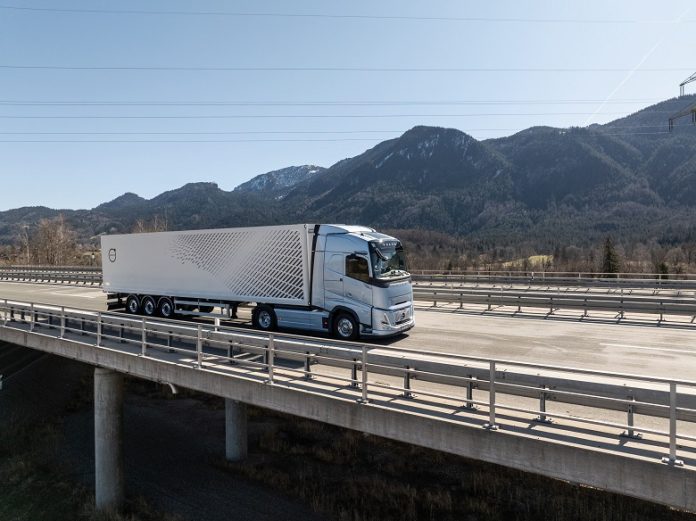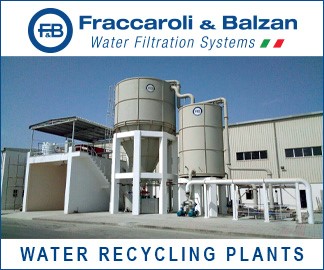Volvo Trucks is introducing new aerodynamic improvements, applying a proven concept from the aerospace industry to heavy-duty trucks. Subtle yet significant modifications to the truck’s cab will substantially reduce air resistance, fuel consumption, and CO₂ emissions.
Volvo recently won the Green Truck Award 2025 with the Volvo FH Aero – thanks to an exceptionally efficient engine and the new Aero-style aerodynamic cab. However, this was also the first major test of Volvo’s latest technology aimed at reducing aerodynamic drag.
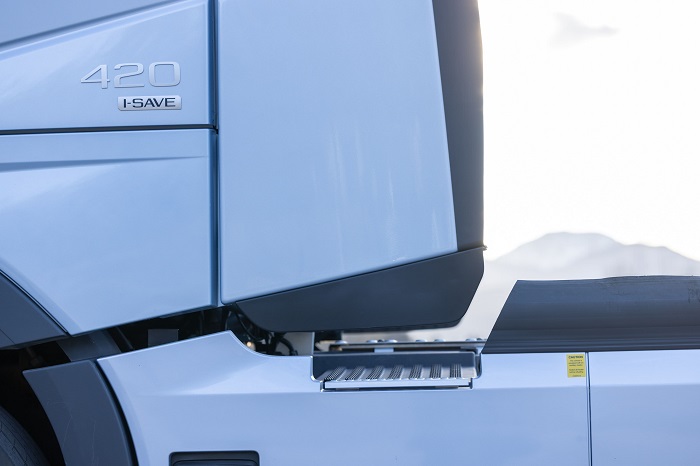 Airflow stabilizers on the cab, extended aerodynamic deflectors, and modified side chassis panels are subtle yet powerful changes that deliver meaningful aerodynamic benefits. This means range, fuel efficiency, and carbon emissions can improve by up to an additional 2% beyond the gains already achieved. Overall, the Volvo FH Aero with the new aerodynamic enhancements can offer up to 7% better fuel efficiency compared to the previous Volvo FH model.
Airflow stabilizers on the cab, extended aerodynamic deflectors, and modified side chassis panels are subtle yet powerful changes that deliver meaningful aerodynamic benefits. This means range, fuel efficiency, and carbon emissions can improve by up to an additional 2% beyond the gains already achieved. Overall, the Volvo FH Aero with the new aerodynamic enhancements can offer up to 7% better fuel efficiency compared to the previous Volvo FH model.
The new features are now available to customers seeking maximum fuel savings in the heavy transport segment and are offered in various combinations on the Volvo FH, FH Aero, and FM models. The benefits of these features apply across all fuel types – electric, gas-powered, and diesel trucks.
“The time spent on simulations and wind tunnel testing was well worth it – with these new cab upgrades, we’re building on last year’s major improvements and delivering even more value to our customers,” said Jan Hjelmgren, Head of Product Management, Volvo Trucks.
The most important addition is the airflow stabilizers located in the upper corners of the cab next to the windshield. Using a carefully engineered pattern of small angled fins, the stabilizers control the way air flows around the corners of the cab.
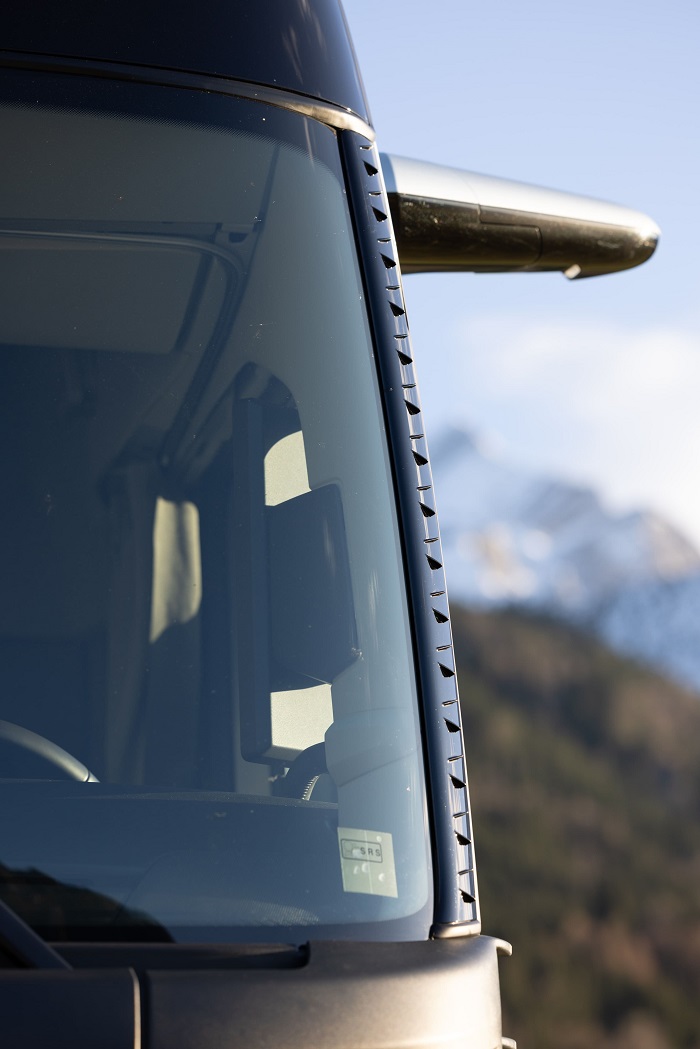 “We’re thinking outside the box, using a technique typically applied in aircraft, single-seater race cars, and wind turbines. The upper corners of the cab are critical for aerodynamics, and with our new Camera Monitor System, we’ve been able to explore new possibilities in this area, using micro-scale fins to influence airflow and create a larger-scale aerodynamic effect. This knowledge will allow us to introduce even more advanced aerodynamic concepts in the future,” explains Anders Tenstam, Senior Technology Expert Aerodynamics, Volvo Trucks.
“We’re thinking outside the box, using a technique typically applied in aircraft, single-seater race cars, and wind turbines. The upper corners of the cab are critical for aerodynamics, and with our new Camera Monitor System, we’ve been able to explore new possibilities in this area, using micro-scale fins to influence airflow and create a larger-scale aerodynamic effect. This knowledge will allow us to introduce even more advanced aerodynamic concepts in the future,” explains Anders Tenstam, Senior Technology Expert Aerodynamics, Volvo Trucks.
While the airflow stabilizers improve the front-end aerodynamics of the cab, they also enable better performance from two additional upgrades: aerodynamic deflectors that extend 50 mm to close the gap between the cab and trailer, and modified side chassis panels that align more precisely with the rear fender.
These three new features work together based on the principle that 1+1=3, meaning their combined effect is greater than the sum of their individual benefits.
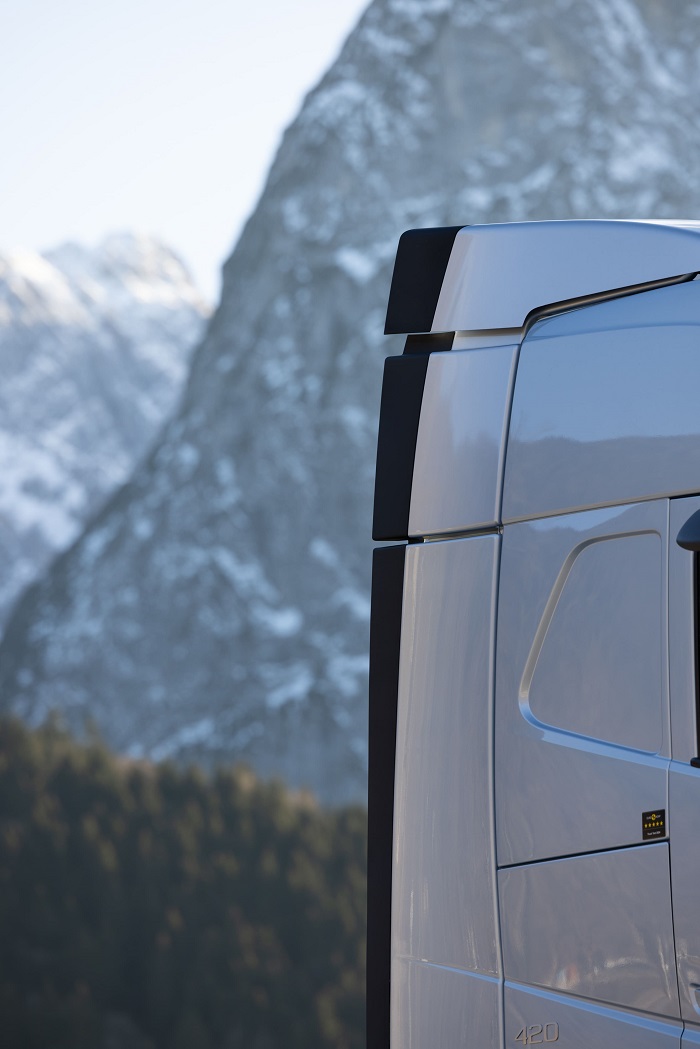 The new Volvo FH Aero is a testament to how crucial aerodynamics can be for improving fuel efficiency in a modern truck cab. With a 24 cm cab extension and several design changes aimed at reducing drag, the Volvo FH Aero delivers major gains in fuel economy – especially important considering the high mileage of heavy-duty trucks operating on long-haul routes.
The new Volvo FH Aero is a testament to how crucial aerodynamics can be for improving fuel efficiency in a modern truck cab. With a 24 cm cab extension and several design changes aimed at reducing drag, the Volvo FH Aero delivers major gains in fuel economy – especially important considering the high mileage of heavy-duty trucks operating on long-haul routes.


